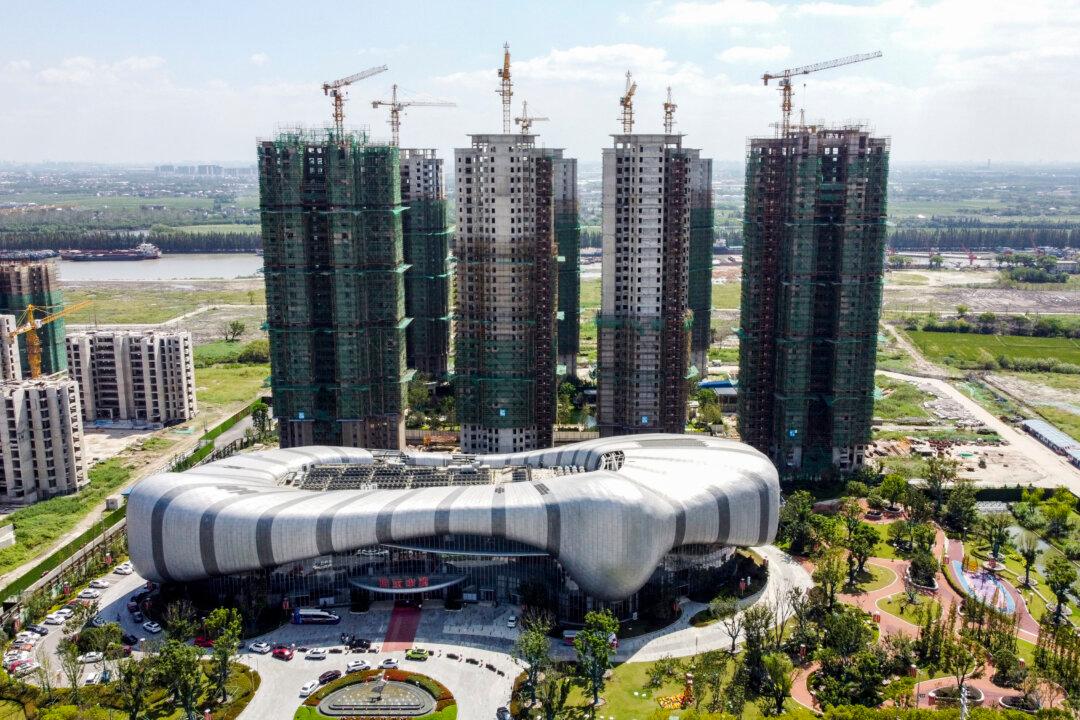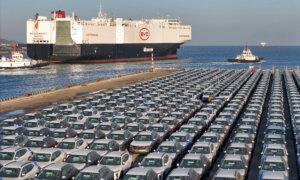Beijing seems to want the rest of the world to help with China’s economic problems. Because the property crisis, among other considerations, has led to a shortfall in domestic Chinese demand for goods and services, Beijing’s planners, in an effort to get rid of surplus products, have revved up export efforts, especially of electric vehicles (EVs) and other green energy equipment.
However, unlike some 25 years ago, when Beijing last pursued such policies, the rest of the world is not cooperating. Like so many of the other old remedies Beijing uses to revive China’s economy, this one is not working and will not work, however much the country’s leadership in Beijing wants it to succeed.
China’s economy certainly needs help. Its problems run deep. The property crisis that began in 2021 when the developer Evergrande admitted financial failure has only worsened. After a long period of inaction by the authorities in Beijing, the crisis has dragged down housing sales and construction activity, which were, as of February, respectively, 33 percent and 30 percent below year-ago levels.
Perhaps worse, the crisis has undermined the ability of Chinese finance to support growth by saddling individuals and financial institutions with large amounts of questionable debt. What is more, the shortfall in housing sales has depressed real estate values and accordingly cut into household net worth and confidence sufficiently to restrain consumer spending. And because local governments depend on real estate development for revenues, the crisis has also made it difficult for them to service their debts and, in some cases, even provide basic services.
In the face of this phalanx of problems, Beijing’s planners have failed on at least two counts.
First, they have refused to adequately address the property crisis. They ignored it for a long time, allowing it to metastasize. More recent responses—minor interest rate cuts and relatively small amounts dedicated to the “white lists” of projects to get help from the state-owned banks—are inadequate to lift the burdens that property failures have long since inflicted on Chinese finance and the economy.
Second, after neglecting the underlying cause of much of the country’s problems, Beijing has, instead of remedying it, emphasized manufacturing, which makes China more dependent on exports than it already was because of insufficient domestic demand.
This kind of export-driven growth model might have worked in the 1990s and 2000s, but things are different now. Back then, China had little option but to count on exports. It was too underdeveloped to have much consumer demand, and domestic demand came from the construction of needed infrastructure, which provided only a few outlets for the products of Chinese factories.
Most importantly, world markets then could easily accommodate China’s needs. After all, China was barely 2 percent of global exports then. But today, that portion of global exports has risen to 15 percent, making it much harder for other economies to take much more without harming themselves. Circumstances simply do not look propitious for China to repeat the game it started some 25 years ago.
The world’s reluctance to accommodate China’s needs has now become increasingly evident. The United States had already placed high tariffs on Chinese imports, and now, to protect its domestic industry, it is considering additional tariffs on EVs, batteries, and other green energy products, even steel. The European Union has complained about Chinese dumping of cheap EVs on its markets and is considering retaliatory tariffs. The UK has complained about a flood of Chinese tractors and construction machinery, no doubt because construction declines in China have dried up domestic demands for such products. London is opening an anti-dumping investigation. The British have also lodged complaints about electric bicycles.
The resistance isn’t just confined to developed economies. Brazil, India, Indonesia, Chile, and Mexico have complained about Chinese dumping in steel, ceramics, and chemicals. Chile is considering a 15 percent tariff on Chinese steel. India has added Chinese bolts, mirrors, and vacuum-insulated flasks to its dumping complaints. Indonesia has done the same for synthetic yarns, saying that the flood of Chinese products has jeopardized its domestic industry.
Since the start of the year, governments across the map have announced more than 70 import-related measures against China. That is up from 50 in 2021 and 2022. Clearly, things will not go as they did 25-some years ago. This almost entirely export-driven model will fail. Perhaps for the time being, memories of past successes will blind Beijing’s planners and policymakers, but in time, reality will pull the scales from their eyes. At this juncture, Beijing would do well to refocus on the country’s still-festering property crisis and thereby lift domestic demand, which is ever the solution in a developed economy, something China has become.







